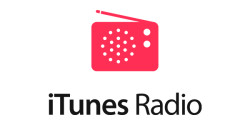On Friday Apple sent an email to iTunes Radio listeners announcing that the free ad-supported version of the service will shut down January 29. Thereafter iTunes Radio will only be available to Apple Music subscribers, without any advertising. Beats 1 Radio will remain Apple’s only non-subscription music service.
This announcement follows news that Apple shut down its advertising division, which sold ads into iOS applications, as well as on iTunes Radio. Though iTunes Radio certainly had its acolytes, according to Edison Research’s Infinite Dial 2015 report the service still trailed internet radio leaders Pandora, iHeartRadio and Spotify in listenership. Put these together and it seems likely that the cost of operating ad supported iTunes Radio outweighed its revenue potential combined with Apple’s overhead for selling its own ads.
My own experience with iTunes Radio demonstrated it to be adequate at best, and derivative of services like Pandora and Spotify radio, but offering up little to recommend it to users of other streaming platforms. Principally, the service’s only advantage is that it’s preinstalled on devices with a 20% share of the global smartphone market.
As an iPhone user I found iTunes Radio principally to be an annoyance, as an unwanted appendage stuck in to the Music app that would show up uninvited periodically and begin playing when instead I want to hear music stored on my device. I won’t quite say “good by and good riddance,” but I also won’t find myself missing the free iTunes Radio.
This does appear to signal a further narrowing of the free, ad-supported online radio market, following the demise of Rdio late last year. However, Rdio’s woes seem to be brought on as much by poor strategy and management as by the high cost of doing business.
I also hesitate to lump the end of free iTunes Radio in with the uncertainty facing small and medium webcasters coming from the expiration of the Webcaster Settlement Act of 2009. That’s because the scale of iTunes Music greatly outclasses that of these internet broadcasters. Moreover, the much more radio-like Beats 1 will remain free and ad supported.
A lesson one might take away is that in internet radio not all curation is created equal. While iTunes Radio offers up curated genre, artist and guest DJ stations, there is little to differentiate these from stations and playlists available on Spotify or Amazon Prime Music, for example. You might find one you particularly like, but I’m not sure a listener will find a critical mass of stations that causes iTunes Radio to win out–especially if you’re already a fan of another service. And while iTunes’ stations are customizable by the user, the experience doesn’t match that of industry-leader Pandora.
Yet, Apple does offer something different with Beats 1 Radio. While not at all interactive–listeners can’t thumbs up, favorite or skip tracks–the service does provide something that Spotify, Pandora and Amazon do not: real DJs. Amongst the top internet music radio providers in the US, only the ones with roots in terrestrial broadcasting–like iHeartRadio, CBS Radio and Cumulus–offer that “real radio” experience.
And, while I’m not overly impressed by Beats 1, I do have to acknowledge that its moderately eclectic global outlook is unique, making it a very strong alternative to 90% of the ultra-homogenized local station streams offered by iHeart, CBS and Cumulus. Perhaps due to the relative success of Beats 1, there are indications that Apple intends to grow the Beats family with additional stations.
Simply put, Beats 1 has personalities, while genre stations just have a stream of tunes. I’m sure that paid Apple Music subscribers will continue using iTunes Radio because it’s ad-free for them, giving it an edge over any ad-supported service. But that’s its only edge. Beats 1, on the other hand, lets you hear from the DJ who’s choosing some percentage of the tracks, depending on the show. Funny how old fashioned radio values thrive in the supposed on-demand era.
This only begs the question of how many more ad-supported automated multi-genre internet radio services are really needed. No doubt, there is room for innovation. But there’s not much call for Pandora or Spotify look-a-likes.
What is always needed is more stations with a distinct human touch, that don’t necessarily stick to strict genre definitions, or that focus on niches that fall far outside the popular music boundaries.



